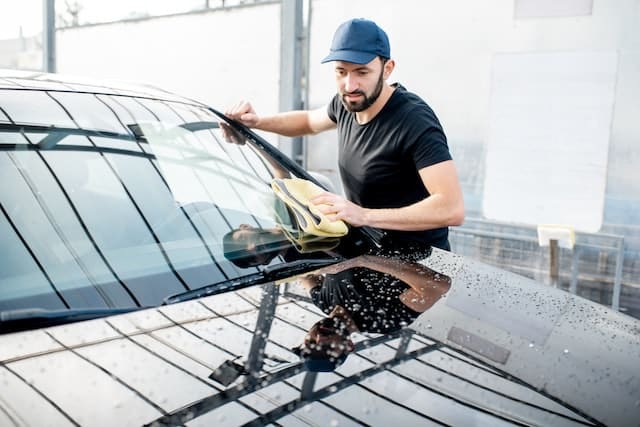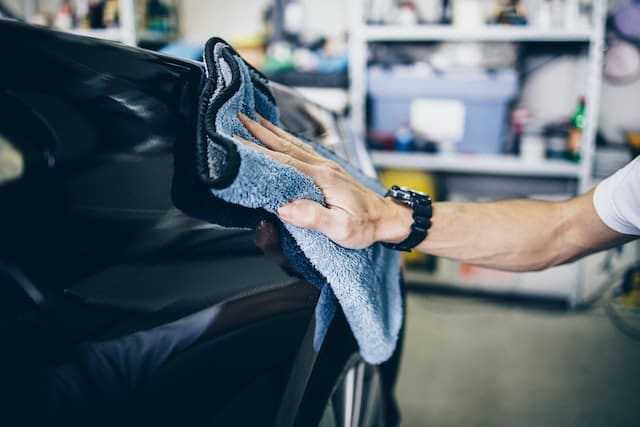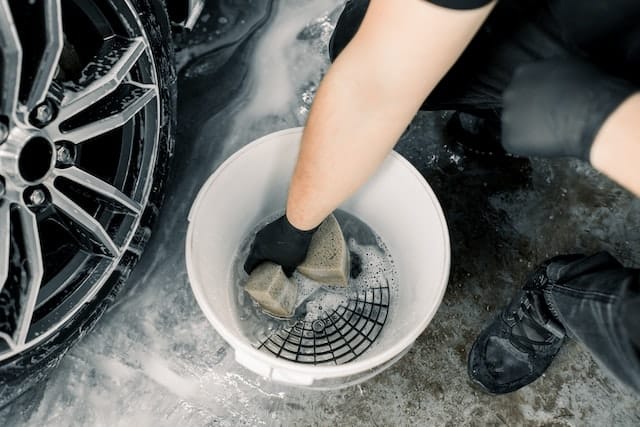
Microfiber car cloths have become a popular choice among car enthusiasts and professionals for their exceptional cleaning abilities and gentle touch on various surfaces.
Importance of using the right cleaning materials for car care
Using the right cleaning materials is crucial to maintaining the appearance, longevity, and value of your vehicle while preventing damage to the paint, interior surfaces, and glass.
Microfiber cloths offer numerous advantages, such as superior cleaning power, scratch prevention, and versatility in various automotive cleaning tasks.
What is Microfiber?
Definition and composition of microfiber
Microfiber is a synthetic material made from ultra-fine fibers, typically composed of a blend of polyester and polyamide. The fibers are thinner than a single strand of human hair, providing an incredibly soft and absorbent surface.
Characteristics of microfiber material
Microfiber is known for its excellent absorbency, quick-drying properties, and ability to attract and trap dirt, dust, and debris due to its large surface area and electrostatic properties. C. Different types of microfiber weaves
There are several types of microfiber weaves, each suited for specific cleaning tasks. Common weaves include the flat weave, terry weave, waffle weave, and glass weave, each offering varying levels of absorbency, softness, and cleaning power.
Benefits of Using Microfiber Car Cloths

Superior cleaning power
The ultra-fine fibers of microfiber create a large surface area, which allows for efficient cleaning and absorption of dirt, dust, and liquids. The electrostatic properties of the material also help attract and trap particles, ensuring a thorough clean.
Scratch and swirl prevention
Microfiber car cloths are gentle on automotive surfaces, reducing the risk of causing scratches or swirl marks on the paint, glass, or interior materials. The soft, plush fibers effectively lift and trap particles, minimizing surface contact and potential damage.
Lint-free and streak-free results
Unlike traditional cotton cloths or towels, microfiber car cloths leave no lint or streaks behind, ensuring a flawless finish on paint, glass, and other surfaces. This makes them ideal for tasks such as drying, polishing, and detailing. D. Reusability and eco-friendliness
Microfiber car cloths are machine washable and can be used multiple times, reducing waste and the need for disposable cleaning products. This makes them an environmentally friendly option for automotive care.
Versatility in automotive cleaning applications
Microfiber car cloths are suitable for a wide range of automotive cleaning tasks, including washing and drying the exterior, waxing and polishing, interior cleaning, and glass cleaning. Their adaptability makes them an essential tool for maintaining your vehicle’s appearance and value.
How to Choose the Right Microfiber Car Cloth

Understanding GSM (grams per square meter) and its importance
GSM refers to the density of microfiber in a cloth, and it affects the cloth’s absorbency, softness, and durability. Higher GSM cloths are typically thicker and more absorbent, while lower GSM cloths are thinner and more suitable for tasks requiring precision or a smooth finish.
Selecting the appropriate weave for different tasks
Choose a weave based on the specific cleaning task at hand. For example, a flat or terry weave is ideal for general cleaning, a waffle weave for drying, and a glass weave for cleaning windows and mirrors. Each weave has unique properties that make it suitable for certain applications.
Size and color considerations
Selecting the right size cloth can make your cleaning tasks more manageable. Larger cloths are suitable for washing and drying, while smaller cloths are great for detailing work. Consider using different colored cloths for various tasks to prevent cross-contamination and maintain cleanliness.
Proper Care and Maintenance of Microfiber Car Cloths
Cleaning and washing recommendations
Wash microfiber cloths separately from other laundry to prevent lint contamination. Use mild detergent without fabric softeners or bleach, as these can damage the fibers and reduce their effectiveness. Hand washing or using a gentle machine wash cycle is recommended.
Drying methods and tips
Air-drying microfiber cloths is the best way to maintain their effectiveness, as high heat from tumble drying can damage the fibers. If you must use a dryer, choose a low heat setting and avoid using fabric softener sheets.
Storage and lifespan considerations
Store clean, dry microfiber cloths in a cool, dry place, away from direct sunlight or heat sources. With proper care, microfiber car cloths can last for years, providing consistent cleaning performance and value for your automotive care needs.
Common Uses of Microfiber Car Cloths in Automotive Care

Washing and drying the exterior
Microfiber car cloths effectively remove dirt and grime from your vehicle’s exterior without scratching the paint. Their high absorbency makes them ideal for drying the surface, leaving a streak-free and spotless finish.
Waxing, polishing, and detailing
Microfiber cloths are perfect for applying and removing wax, polish, and other detailing products. Their soft, non-abrasive texture ensures a smooth application and a flawless finish, enhancing your vehicle’s appearance and protecting its surfaces.
Interior cleaning and dusting
The electrostatic properties of microfiber cloths make them excellent for dusting and cleaning interior surfaces such as the dashboard, upholstery, and door panels. They effectively lift and trap dust and debris, keeping your car’s interior clean and well-maintained.
Glass and window cleaning
Microfiber car cloths, particularly those with a glass weave, are designed for cleaning windows and mirrors. They remove dirt, smudges, and fingerprints without leaving streaks or lint behind, ensuring clear and spotless glass surfaces.
Microfiber Car Cloths vs Cotton vs Sponges

When it comes to automotive cleaning and detailing, the debate between microfiber car cloths, cotton and sponges often arises. Each material has its own merits, but they all differ in several key aspects. Understanding these differences can help you choose the right cleaning material for your vehicle’s needs.
Cleaning Power
Microfiber Car Cloths
Microfiber’s ultra-fine fibers create a large surface area, allowing them to efficiently pick up and trap dirt, dust, and debris. Their electrostatic properties further enhance their cleaning power by attracting particles.
Cotton
While cotton cloths can still effectively clean surfaces, they may not pick up and trap particles as effectively as microfiber. This can result in pushing dirt and debris around rather than lifting and removing it.
Sponges
Sponges are effective for holding and distributing cleaning solutions, but they may not pick up and trap particles as well as microfiber cloths. Instead, sponges can sometimes push dirt and debris around, potentially causing scratches.
Scratch and Swirl Prevention
Microfiber Car Cloths
The soft, plush fibers of microfiber cloths are gentle on automotive surfaces, reducing the risk of causing scratches or swirl marks on paint, glass, or interior materials.
Cotton
Cotton cloths, especially those with rougher textures, may be more likely to cause scratches or swirls on delicate surfaces.
Sponges
Sponges, especially those with abrasive surfaces or trapped debris, can cause scratches or swirl marks on delicate surfaces if not used carefully.
Absorbency
Microfiber Car Cloths
Microfiber cloths are highly absorbent due to their increased surface area and can hold several times their weight in water. This makes them ideal for drying or cleaning tasks where absorbency is important.
Cotton
While cotton can be absorbent, it generally does not match the absorbency of microfiber.
Sponges
Sponges are also highly absorbent and can hold a significant amount of water or cleaning solution, making them suitable for washing tasks.
Lint-free and Streak-free Results
Microfiber Car Cloths
Microfiber car cloths leave no lint or streaks behind, ensuring a flawless finish on paint, glass, and other surfaces.
Cotton
Cotton cloths, especially those with loose fibers, may leave lint or streaks on surfaces after cleaning.
Sponges
Sponges may leave behind streaks or residue, particularly when used for drying or cleaning windows and mirrors.
Reusability and Eco-friendliness
Microfiber Car Cloths
Microfiber cloths can be washed and reused multiple times, reducing waste and the need for disposable cleaning products.
Cotton
Cotton cloths are also washable and reusable, but their cleaning performance may degrade more quickly compared to microfiber.
Sponges
Sponges can also be washed and reused, but they tend to degrade more quickly and may need to be replaced more often.
Drying Time
Microfiber Car Cloths
Microfiber car cloths dry quickly due to their synthetic material and porous structure, which helps prevent the growth of bacteria and mold.
Cotton
Cotton cloths take longer to dry, which may result in a musty smell or the growth of bacteria if not properly cared for.
Sponges
The drying time for sponges can vary depending on factors such as size, material, and environment. However, sponges generally take longer to dry than microfiber cloths due to their porous structure and ability to retain moisture.
